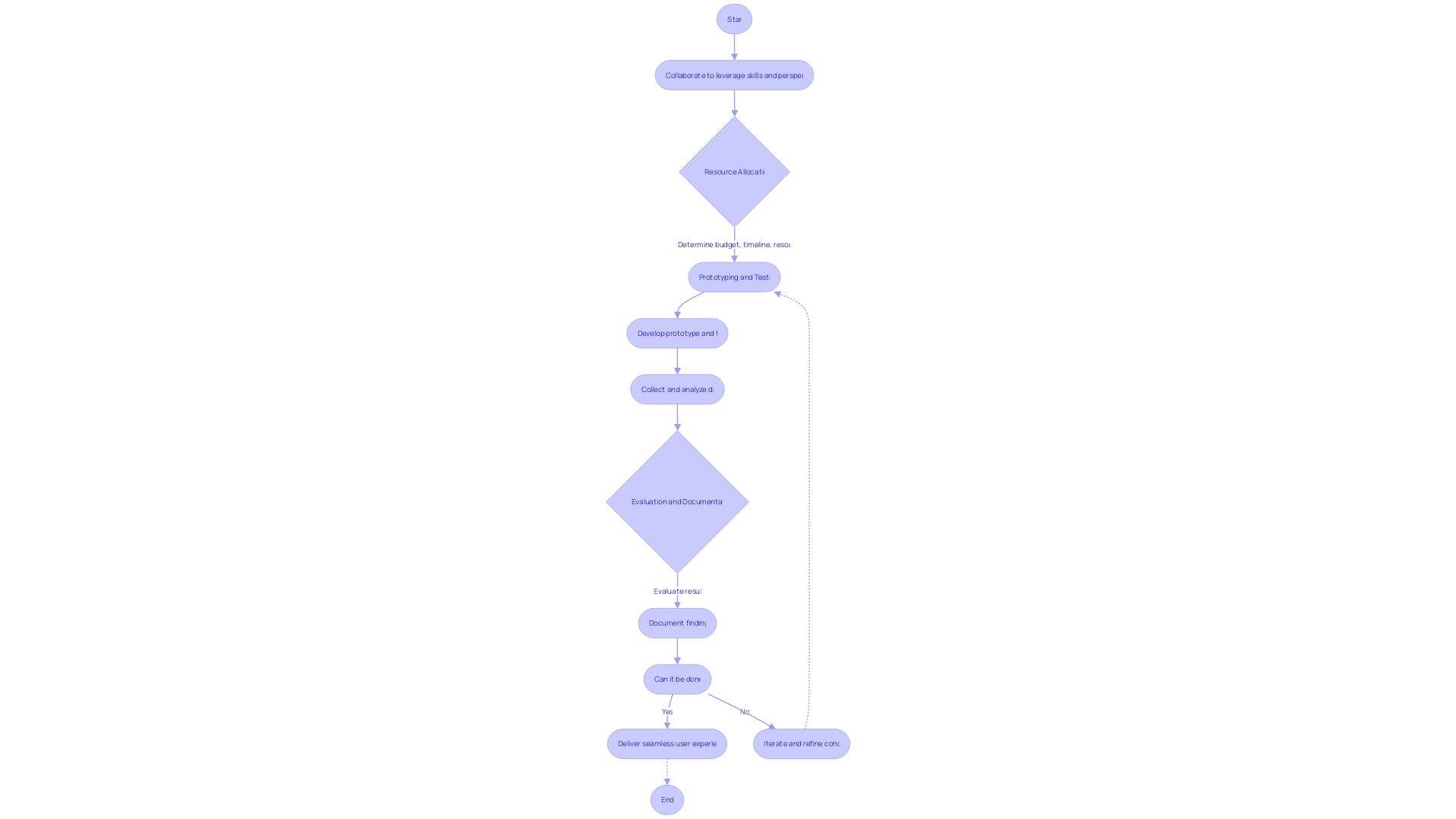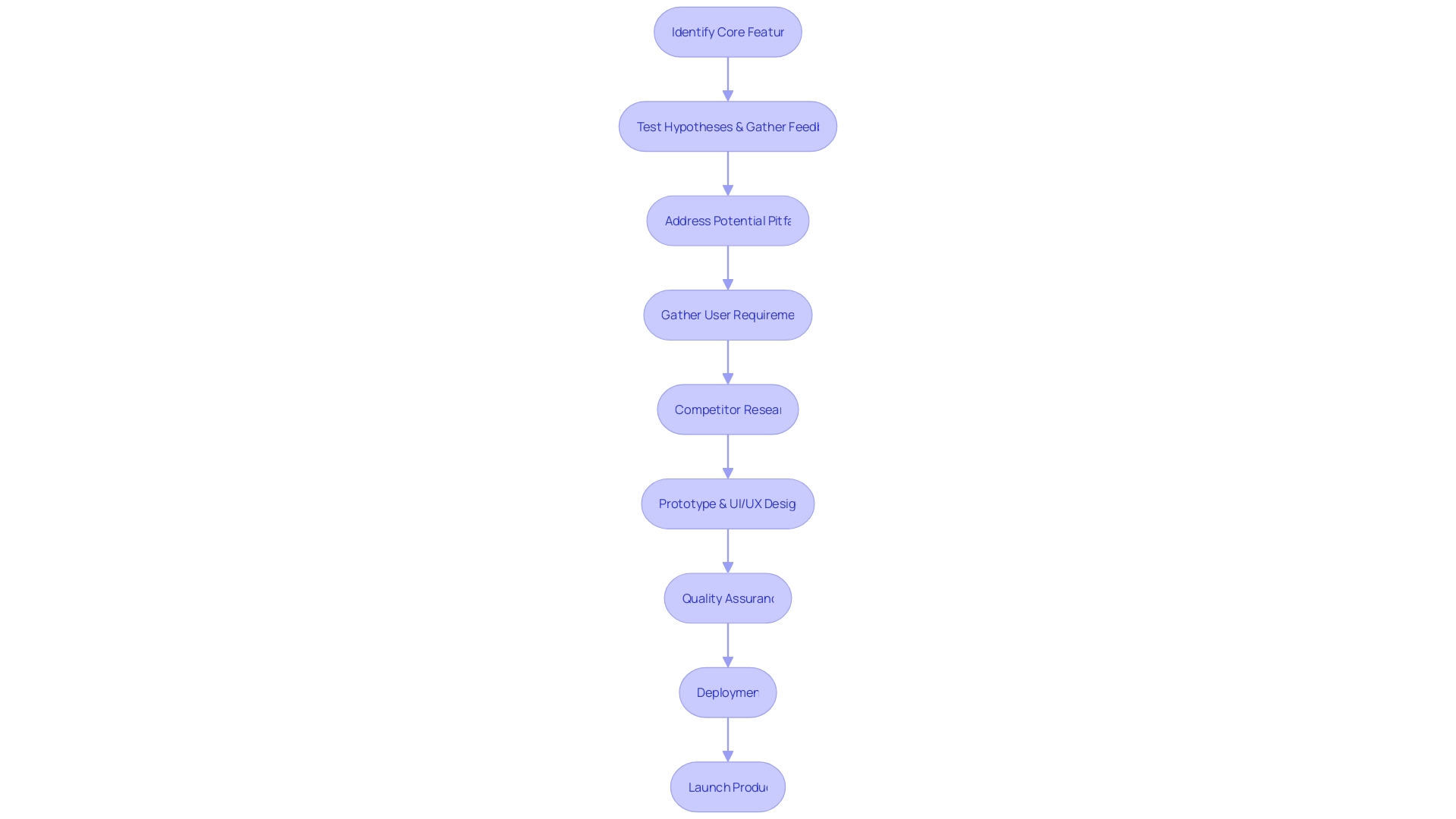Introduction
The inception of a software project is akin to an architect crafting a miniature scale model. It's not the edifice itself, but a tangible representation to visualize and refine the concept.
In software development, this is achieved through a proof of concept (POC), a pivotal experiment that validates the feasibility of an idea by creating a small-scale version of the product. This article explores the importance of a proof of concept in software development, its key elements, steps to write one, real-life examples, and its significance in the realm of software development. Join us as we delve into this topic and discover how a proof of concept can guide the development journey and serve as a reality check.
What Is a Proof of Concept?
The inception of a software project is akin to an architect crafting a miniature scale model. It's not the edifice itself, but a tangible representation to visualize and refine the concept. In software development, this is achieved through a proof of concept (POC), a pivotal experiment that validates the feasibility of an idea by creating a small-scale version of the product.
This POC focuses on the essential functionality, gauging both performance and market viability, thereby mitigating the risk of large-scale resource investment on unproven ideas. As Jared Spool insightfully puts it, prototypes and POCs "don't focus on the solution, but on understanding the problem." They are investigative tools that reveal new aspects of the problem at hand.
This approach is particularly beneficial in the realm of software development, where the coding and development phase consumes the lion's share of time and resources. By sidestepping a premature full-scale implementation, a POC can save a metaphorical 99% of these resources. This streamlined approach has been embraced in various sectors.
For instance, Google's AI tool Genesis, while not intended to replace journalists, serves as an assistive technology that can suggest headlines and writing styles, enhancing productivity. Similarly, in software development, POCs can lead to insights that steer the project away from potential pitfalls. The process begins with a meticulous plan that defines project scope and timelines, followed by a design phase that brings the concept to life through wireframes and prototypes.
It's a burst of creativity backed by technical expertise. The subsequent development phase is where the crux of software engineering takes place—translating these designs into functional code. It's imperative to maintain specificity and context here to align with initial requirements and to ensure, through rigorous testing and quality assurance, that the final product delivers a seamless user experience.
Ultimately, the POC is an early-stage beacon, guiding the development journey and serving as a reality check. It's a strategy that resonates with Jason Fried's philosophy: rather than spending excessive time on validation through interviews, launching a tangible product quickly to test the market can often be more efficacious. In today's fast-paced digital landscape, where agility and efficiency are paramount, the POC stands as a testament to the idea that sometimes, building and learning from a minimal yet functional model is the most effective path to innovation.

Why Is a Proof of Concept Important?
Understanding the value of a proof of concept (PoC) is to acknowledge it as a crucial step in the software development lifecycle, much like crafting a scale model before constructing a grand building. It's a preemptive measure, a trial to gauge the technical viability of an idea and to determine whether it will resonate with the market and its intended users. A PoC serves as an insightful prototype, not unlike an architect's miniature version of a building, which allows developers to visualize the end result, grasp the complexities of the project, and refine the concept before committing extensive resources.
In the shift-left development approach, which interlaces security protocols early on in the process, a PoC is a strategic effort to mitigate risks at the outset. It's a proactive step in a development cycle now characterized by rapid, agile sprints, ensuring that both functionality and security considerations are addressed from the start. This methodology is especially pertinent in today's fast-paced development environments where traditional, lengthy cycles are a relic of the past.
Moreover, testing is an integral part of a PoC, aiming to iron out any imperfections and ensure the software functions seamlessly. However, as research indicates, testing's effectiveness is not solely reliant on conventional wisdom but should be empirically evaluated to truly enhance the software's quality. This calls for a meticulous approach to PoC, where each test case is scrutinized for its ability to detect bugs, contribute to program comprehension, and facilitate maintenance, thereby establishing its quality and value in the development process.
Key Elements of a Proof of Concept
In the intricate dance of software development, envisioning the final product is akin to an architect creating a scale model before erecting a grand edifice. The model serves as a visual and interactive guide, allowing stakeholders to grasp the envisioned structure, navigate its complexity, and share a convincing representation of the project. In the digital realm, a software prototype operates on the same principle.
It isn't the code that's paramount—it's a tool for shaping the prototype. This early iteration is about more than just a visual aid; it's a critical stage for understanding user needs, defining functional requirements, ensuring technical viability, and uncovering potential hurdles that could arise during full-scale development. The power of prototyping lies in its ability to illuminate these aspects without demanding extensive time or resources.
As Jason Fried, co-founder of 37Signals, quipped, sometimes launching a minimal yet functional product to gather real user feedback can be more insightful than any interview. It's a sentiment echoed by Jared Spool, who suggests that prototyping often leads to unexpected discoveries about the problem at hand. Indeed, studies indicate that even with rigorous testing, software bugs remain prevalent, raising questions about the efficacy of test cases.
Empirical evidence suggests that only a fraction of test cases, approximately 10% to 30%, lead to actual bug fixes, highlighting the importance of quality over quantity in testing methodologies. In light of this, the strategic alliance between Fabric Cryptography and =nil; Foundation is particularly relevant, as they work to integrate zero-knowledge proofs into their software, aiming to enhance privacy without compromising on computational efficiency. This collaboration not only advances the field of cryptography but also exemplifies the ongoing commitment to innovation in software development practices.
Steps to Write a Proof of Concept
Developing a proof of concept in software engineering is a multi-faceted endeavor that begins with demonstrating the necessity of a product, which involves defining the project scope, establishing timelines, and allocating resources. It is crucial to maintain a balance of 'burstiness' and specificity in the planning phase to provide a clear roadmap for the development process.
Following the plan, the journey moves into a design phase that requires both creativity and technical expertise to create wireframes, user interface designs, and prototypes, which serve as tangible representations of the user experience. Coding and development form the core phase where software engineers translate these designs into functional code.
A working prototype is essential, and as one industry expert, Jared Spool, notes, prototypes are not about the solution but understanding the problem, asking, "What happens when we try this?" This sentiment echoes the pragmatism of starting with a code that does nothing and then iteratively adding functionality to build confidence that the problem can be solved.
The prototype then undergoes meticulous evaluation to refine the proof of concept, with an emphasis on readability, commenting, and optimization of the code. This process mirrors the wisdom of starting with a simple model, akin to an architect's scale model, to visualize and understand the complexities before constructing the grand building.
Lastly, the proof of concept is presented to stakeholders. This phase is about convincing them of the viability of the project.
Case studies suggest that rapid prototyping and real-world testing often trump extensive upfront validation. For instance, a software company's interest piqued by the use of their documentation for prototype examples demonstrates the value of tangible demonstrations over theoretical validation. Statistical models suggest an average success rate for large projects at around 18%, with smaller projects undertaken simultaneously having individual lower success chances. However, the combined failure rate of these smaller projects is a key metric, indicating that diversified smaller projects can increase the overall probability of success. In the era of AI-assisted software development, news from UMass Amherst highlights a breakthrough in generating whole proofs using Large Language Models to prevent bugs and verify code correctness, with an efficacy of nearly 66%. This innovation underscores the importance of meticulous testing and verification in the software development lifecycle.

Real-Life Examples of Proof of Concepts
Proof of Concept (PoC) projects serve as small-scale experiments that enable businesses to evaluate the feasibility of a concept before committing to a full-scale launch. For example, in the automotive industry, the MatchMatrix (MM) methodology supports the early stages of vehicle concept development, allowing engineers to navigate the complexities and maintain brisk development timelines.
This approach enables decision-making to be more transparent and stable, crucial in an industry where the transition from internal combustion engines to electric vehicles (EVs) represents a seismic shift. In software development, Pics are particularly valuable.
They allow developers to create basic versions of applications to demonstrate functionality, providing a controlled environment to test ideas and mitigate risks without the significant investment of resources. The potential to save up to 99% of resources by circumventing the implementation phase is a game-changer, as highlighted by recent advances in AI Functions, which are small, task-specific building blocks that can be assembled to form complex solutions.
In healthcare, machine learning has been leveraged to accurately identify abnormal cardiac rhythms in firefighters, with the hope of developing a portable heart monitor to catch early warning signs of heart trouble. This kind of PoC can have profound implications for on-duty firefighter safety, as sudden cardiac events are a leading cause of death among this group. The practical application of PoCs in technological marketing is exemplified by a data analytics company that sought to integrate machine learning into its software. Instead of rushing to market, the company launched a PoC, testing a scaled-down version with select users to gather feedback and assess scalability. In summary, PoCs are essential for risk mitigation, cost efficiency, and fostering innovation, providing a strategic approach to validate concepts and ensure alignment with business objectives.
Proof of Concept in Software Development
In the realm of software development, the creation of a Minimum Viable Product (MVP) serves as a pivotal milestone. It's a concentrated effort to build a basic yet operational version of the software, which embodies only the most critical functionalities.
This prototype is instrumental in testing hypotheses about the software's performance, usability, and technical robustness. The process is akin to an architect's use of a scale model to visualize and refine a design before construction begins, as highlighted by Jared Spool's insights on prototyping.
An MVP allows developers to address and navigate potential pitfalls or complexities at an early stage, shaping the trajectory of the project. This proactive approach is validated by the recent advancements in AI, as seen with the University of Massachusetts Amherst's Baldur system, which automates the generation of proofs to verify software correctness with a 66% efficacy rate.
Such technological strides underscore the importance of early testing and validation in software development. Moreover, using use cases as a foundation for gathering user requirements, as described by Alistair Cockburn, helps ensure that the software aligns with user needs and expectations. By adhering to this methodology, which includes rigorous quality assurance and attention to detail, developers can mitigate risks and enhance the software's market readiness. Jason Fried's perspective on the rapid development and deployment of projects further reinforces the value of early market testing over extensive pre-launch validation. Ultimately, the strategic deployment of an MVP can save precious resources and time, drawing from the philosophy that 99% of the effort lies in implementation, and bypassing it equates to significant savings.

Conclusion
In conclusion, a proof of concept (POC) is a crucial step in software development. It validates ideas, mitigates risks, and saves resources.
The key elements of a POC involve planning, design, coding, development, and evaluation. A POC allows developers to visualize the end result, refine concepts, and address potential pitfalls early on.
It ensures functionality and security considerations are addressed from the start. Real-life examples across industries highlight the value of POCs in evaluating concepts, testing ideas, mitigating risks, and fostering innovation.
In software development, creating an MVP serves as a pivotal milestone. It shapes the project trajectory, addresses potential pitfalls early on, and enhances market readiness. Overall, a POC is a strategic approach that validates concepts and ensures alignment with business objectives. Embracing this approach leads to efficient innovation in today's digital landscape.





